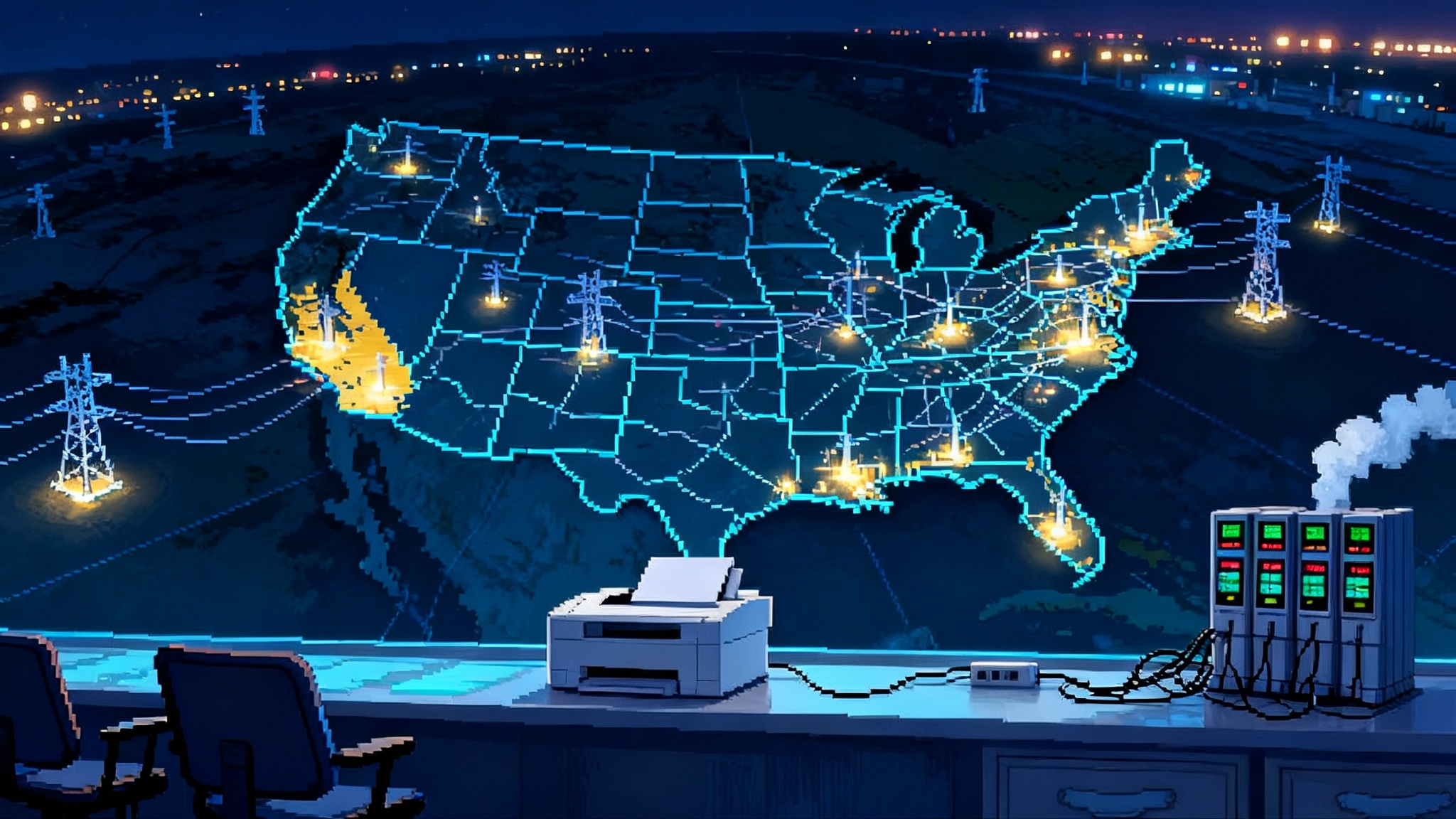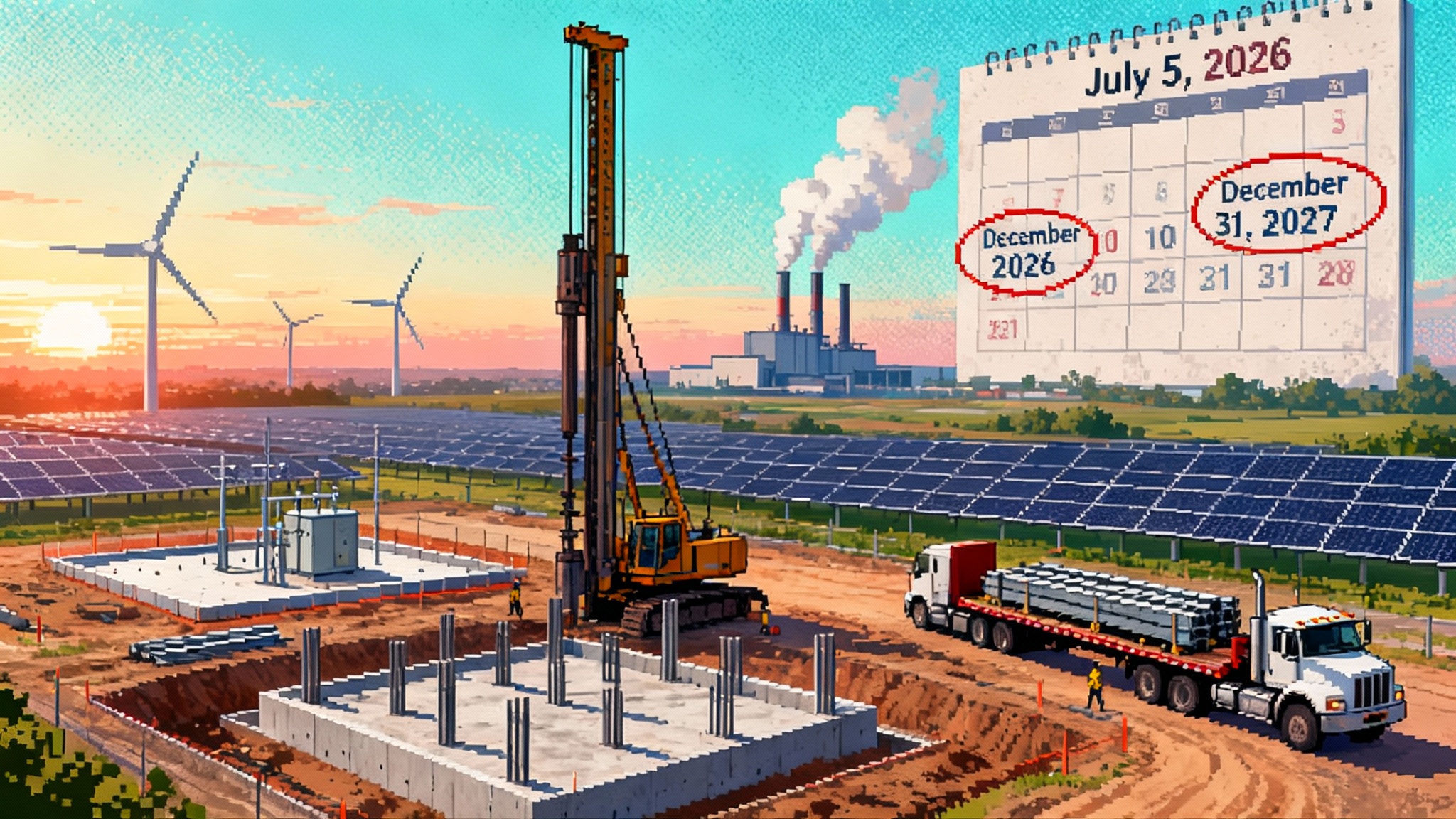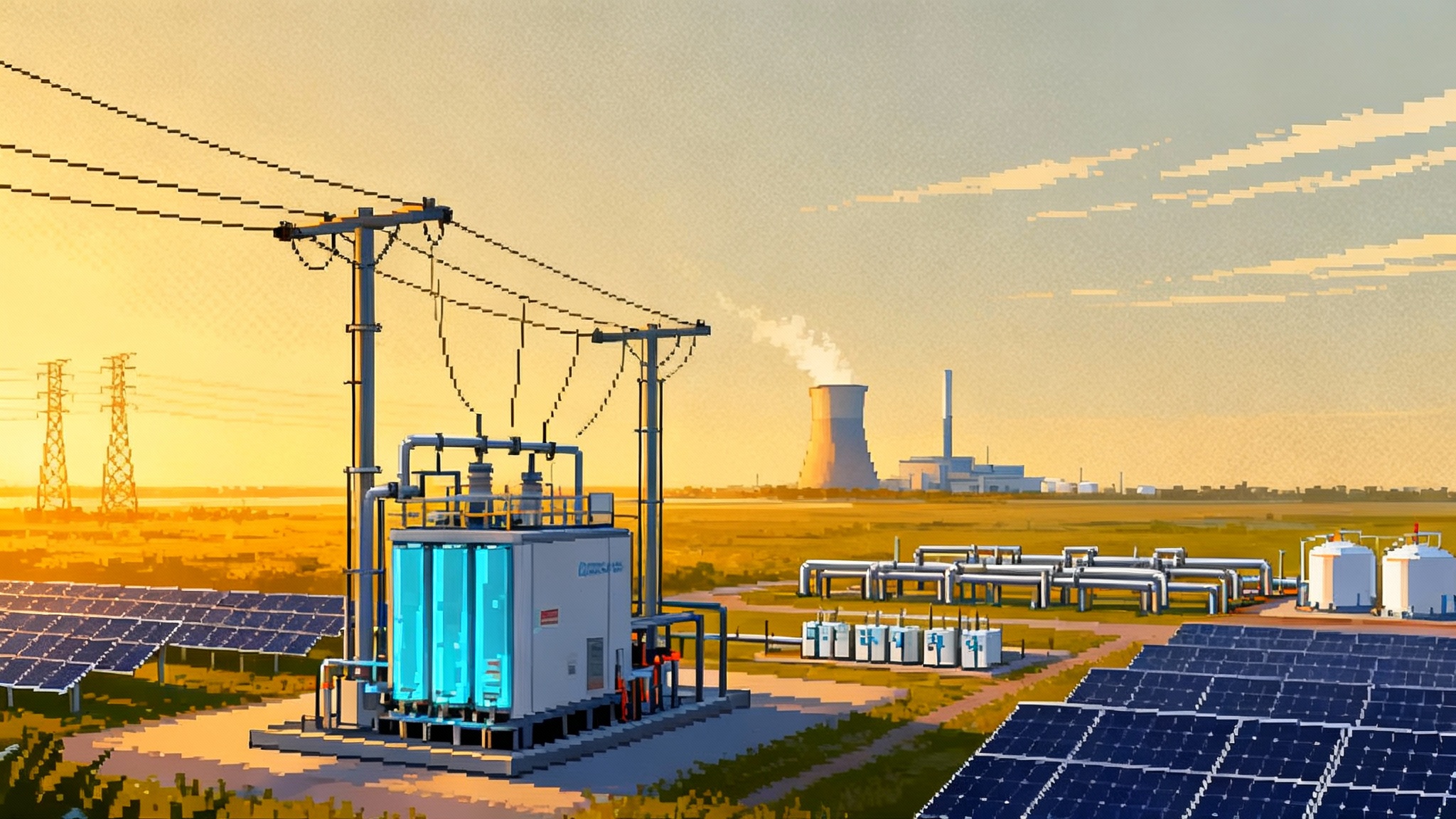EPA’s 2025 Data Blackout: How Power Markets Will React
EPA has moved to end federal greenhouse gas reporting and repeal power-plant CO2 standards, creating a national emissions data gap. Here is how state programs, utility planning, capacity markets, corporate procurement, and project finance will adapt next.

The week the numbers disappeared
On September 12, 2025 the Environmental Protection Agency proposed to terminate the federal Greenhouse Gas Reporting Program, ending annual reporting from thousands of facilities across dozens of categories. The agency framed the move as cutting costs that do not improve health or the environment. The proposal would erase much of the public facility-level dataset that has underpinned climate policy, investor diligence, and corporate emissions accounting for fifteen years. See the EPA’s press release for scope and timing in the EPA proposal to end GHGRP.
The announcement came three months after a separate EPA plan, unveiled on June 11, 2025, to scrap power-sector greenhouse gas standards under Section 111 of the Clean Air Act. Taken together, the two steps point to a future in which the United States has fewer federal rules to cap emissions and less federal data to measure them. For background, see the EPA proposal to repeal power-plant standards.
Why the GHGRP mattered more than most realized
If you work in energy, you have probably used GHGRP data even if you never downloaded the spreadsheets yourself. The program’s facility-level reports fed public dashboards and commercial databases used for everything from carbon intensity benchmarking to locating methane hotspots. Utilities lifted emissions factors and plant profiles into resource-planning models. Corporates used the data to validate Scope 1 and 3 claims, screen suppliers, and evaluate the additionality of offsite power contracts. Investors checked facility histories against siting and permitting timelines. Local governments cited trends in landfills, wastewater treatment, and cement plants to defend bond-funded projects.
Ending federal reporting is not the same as ending measurement or monitoring, and it does not erase historical data. But it cuts off a trusted, consistent, nationwide feed that harmonized methods across sectors. In power, much of the real-time stack-level monitoring for large fossil units occurs under separate Clean Air Markets rules, and that will persist. Yet the GHGRP stitched together power with fuel supply, industrial processes, landfills, and CO2 injection, giving modelers a single, comparable baseline. That federal common language is the part that disappears.
The other shoe: rolling back power-plant CO2 standards
On June 11, 2025 EPA also proposed to repeal Section 111 greenhouse gas standards for fossil-fueled generators that the agency finalized in 2024. Regardless of your view, those rules established a reference path for the carbon performance of coal and natural-gas units. Repeal removes that federal anchor, returns compliance risk to a state-by-state patchwork, and leaves grid operators and utilities to manage policy volatility in their own planning cases.
A federal data blackout, and the market signals it sends
The immediate question for markets is not philosophy but pricing. If the United States loses a coherent federal stream of emissions data and simultaneously sheds the most prominent federal power-sector CO2 rule, which signals remain strong enough to guide capital and procurement decisions?
1) State policy backstops will become the new reference curve
- The Regional Greenhouse Gas Initiative will continue to require rigorous monitoring and reporting of CO2 from covered units under well established state rules that incorporate federal Part 75 methods. That means verified emissions data will keep flowing for generators in participating states, and allowance compliance will continue.
- California’s cap and trade program and its Mandatory Reporting Regulation will remain in force. California’s system includes third party verification and detailed electricity import rules, which means plant-specific and portfolio emissions accounting will remain robust for entities with California obligations.
- Outside these jurisdictions, the picture is uneven. States with clean energy standards or sector-specific rules will keep their own datasets, but methods and transparency vary. For multi-state utilities and corporate buyers, data comparability will degrade as federal baselines fade.
The net effect is a widening informational spread. Entities operating in RGGI and California will enjoy high quality emissions data, while others may rely on proxies. Markets price spreads, and this one will show up in financing costs and contract terms. For how shifting state roles intersect with federal policy, see our overview of the FERC 1920-A grid playbook.
2) Utility planning will lean harder on assumptions, and that adds cost
Integrated resource plans depend on consistent emissions factors, technology cost curves, and policy scenarios. Without GHGRP’s facility-level cross-sector data, utilities and their consultants will build more of the emissions layer from stitched sources and assumptions. That has three consequences:
- Sensitivity bands widen. When emissions baselines are less certain, planners run more cases, and boards demand larger buffers. That can tilt portfolios toward familiar assets and delay final investment decisions.
- Electrification modeling gets harder. Utilities planning for load growth from heat pumps, data centers, and electric vehicles need to understand upstream and nonpower emissions interactions to defend least-cost portfolios. Losing GHGRP narrows the evidence for those coupled models.
- State commissions have fewer third party checks. Public intervenors and consumer advocates often use GHGRP-derived analysis to challenge or confirm utility claims. With less consistent federal data, rate cases carry more dueling spreadsheets and fewer common facts, which lengthens proceedings and raises regulatory risk premiums.
3) Capacity markets will attach higher policy risk premiums
Markets such as PJM and ISO New England do not directly price carbon, but the bids that shape clearing prices embed expectations about policy, permitting, and fuel costs. Remove a federal standard and a federal dataset, and traders will revise risk buffers for certain resource types:
- Existing coal and lower-efficiency gas units may see higher earnings volatility in forward markets. The absence of a federal CO2 rule removes one near-term compliance cost, but it increases the probability of abrupt state actions when local air concerns or reliability events trigger responses. That unpredictability shows up as a higher cost of capital for assets that rely on multi-year margins to justify maintenance and environmental retrofits.
- New gas capacity bids could include higher option value for future carbon controls. Developers remember the swing from federal to state-led carbon policy in the past decade. Without a federal guardrail, project sponsors will seek contractual protections, capacity market rule changes, or premium returns to compensate for state-by-state carbon overlays. For context on gas market dynamics after policy pivots, see our take on the methane markets rewrite.
- Clean firm and storage resources get a mixed signal. On one hand, the removal of a federal CO2 standard reduces the near-term compliance value of low-carbon capacity. On the other, greater policy fragmentation increases the value of resources that can clear across a range of futures. Expect sponsors to emphasize congestion relief, flexibility, and local capacity accreditation as revenue hedges that do not depend on carbon rules.
4) Corporate procurement will pivot to verification and provenance
Large buyers with science-based targets face an immediate accounting problem. Many Scope 1 and 3 inventories, as well as supplier scorecards, rely on GHGRP values or on databases calibrated to GHGRP methods. If that calibration source goes dark, corporate auditors will insist on alternative evidence.
- Expect more market-based accounting backed by contract-specific attestations. For power, that means cutting to the chase on the provenance of megawatt hours, congestion impacts, and hourly matching. Buyers will design requests for proposals that reward projects with transparent dispatch data and robust meter-to-attribute chains. Western buyers weighing market structures should watch the EDAM vs Markets+ buildout because market design affects data access and provenance.
- Voluntary carbon and methane performance claims will face higher scrutiny. Facility-level emissions deltas that once flowed from GHGRP will need to be replaced with third party monitoring, satellite corroboration, or state reporting. That costs money, so the green premium widens where federal data once lowered diligence burden.
- Supplier engagement will formalize. Instead of relying on federal dashboards to spot outliers, buyers will require verification letters, independent engineer reports, or state filings. Procurement teams will shift talent toward measurement and assurance, not just price and term.
5) Project finance will reprice reporting risk, especially for CCS
For renewable projects, the main impact is diligence friction rather than eligibility. For carbon capture and storage, the stakes are higher.
- The GHGRP contains subparts that govern CO2 injection and geologic sequestration monitoring and reporting. If EPA removes reporting obligations for CO2 injection sites, projects that relied on that pathway will need to pivot to alternative standards and independent verification frameworks to demonstrate secure storage for tax credit eligibility and offtake claims. That is possible, but it shifts costs and timelines to private validators and insurers.
- Lenders and tax equity will update term sheets. Sponsors should expect covenants tied to alternative monitoring protocols, certification milestones, and data access provisions that replace the prior reliance on federal reporting.
- Insurance and recourse will matter more. Without a federal reporting framework, project parties will rely on representations and warranties plus performance insurance to manage leakage and accounting risks. Premiums will reflect the credibility of nonfederal monitoring.
What does not change, and what shifts to the states
Some elements are more resilient than they appear at first glance.
- Market operations continue. Grid operators will keep scheduling and settling energy and ancillary services with the same telemetry they use today. Operational emissions reporting is not required to keep lights on. The risk shows up in planning horizons, not in dispatch.
- State carbon programs remain powerful. RGGI and California can collect, verify, and publish data independently of federal action. If anything, their role as de facto national substitutes grows. That invites more companies to structure transactions and siting around those jurisdictions, not because allowances are cheap, but because data are reliable.
- The federal inventory persists. The national greenhouse gas inventory submitted to the UNFCCC follows international guidelines and draws from multiple sources. It does not provide the same facility-level transparency as GHGRP, but it will continue.
What changes is the information architecture. The federal government is stepping back from granular disclosure. States and private verifiers are stepping forward. The market will pay for the pivot in time and money.
What to watch next in the comment process
EPA’s September 12 proposal triggers a formal notice and comment rulemaking. Track the following as the docket opens and the litigation picture emerges:
- Federal Register publication date and the length of the comment window. Watch for requests to extend the period to compile technical records from state agencies, utilities, and financial groups.
- Whether EPA carves out or delays the elimination of reporting for CO2 injection and sequestration. A transitional pathway could reduce disruption for CCS projects that have planned around specific monitoring frameworks.
- How the agency justifies its interpretation of its information collection authority. Expect commenters to argue that the Clean Air Act allows, or compels, EPA to maintain a programmatic dataset to inform present and future rulemaking across sectors.
- The fate of historical datasets and public tools. Stakeholders will push for commitments to preserve and maintain access to historical series in machine-readable form so that models do not break and trend analyses remain credible.
- Coordination with EIA and state agencies. Expect utilities and grid operators to urge a formal interagency plan to avoid duplicative reporting or gaps, especially for cross-state planning and capacity accreditation.
The litigation map, and why timing matters
Legal challenges are a near certainty. State attorneys general, environmental organizations, and some clean energy trade groups will likely file petitions in the D.C. Circuit arguing that eliminating GHGRP is arbitrary and capricious, that EPA failed to consider reliance interests, and that the decision undercuts the agency’s core mission. Parallel cases will target repeal of power-plant greenhouse gas standards on statutory and procedural grounds.
From a market perspective, the key question is not just who wins, but when. If courts stay either action pending review, compliance and reporting could continue on autopilot through at least one more planning cycle. If courts decline to stay the actions, stakeholders will move quickly to state-led solutions and private verification. Either outcome requires contingency planning now.
Practical steps for energy market participants
- Utilities: update IRP inputs to reflect wider emissions uncertainty bands, and disclose how that affects resource selection. Build explicit state policy toggles into capacity expansion and production cost models, and design portfolios that are resilient across a range of reporting assumptions.
- Corporate buyers: rewrite power purchase agreement data clauses to require real-time metering, hourly attributes where feasible, and third party verification of emissions claims. Build supplier data protocols that do not rely on federal facility datasets.
- Project sponsors: align your monitoring plans with the most robust state or international standards available, and secure independent engineer capacity early. For CCS, map a compliant pathway that does not depend on federal reporting, and socialize it with tax equity and lenders before term sheets harden.
- Investors: recalibrate hurdle rates and covenants for assets with policy-sensitive margins. Consider underwriting strategies that value flexibility and data transparency alongside megawatt hours.
The bottom line
Federal rules set the floor, and federal data make markets more legible. EPA’s 2025 moves take away both for greenhouse gases, at least for now. The immediate effect is not a spike in emissions or a collapse of the grid. It is a rise in uncertainty that ripples into capacity market bids, IRP assumptions, corporate procurement strategies, and project finance structures. States with strong programs will become islands of clarity, and that clarity will command a premium. Everyone else will pay more to measure, verify, and insure what the federal government used to publish for free.
The docket will tell us whether the agency narrows its plan, extends timelines, or leaves the task to courts. Markets will not wait. The smart money will prepare for a world where emissions accounting is a state enterprise and a private service, not a federal utility.








